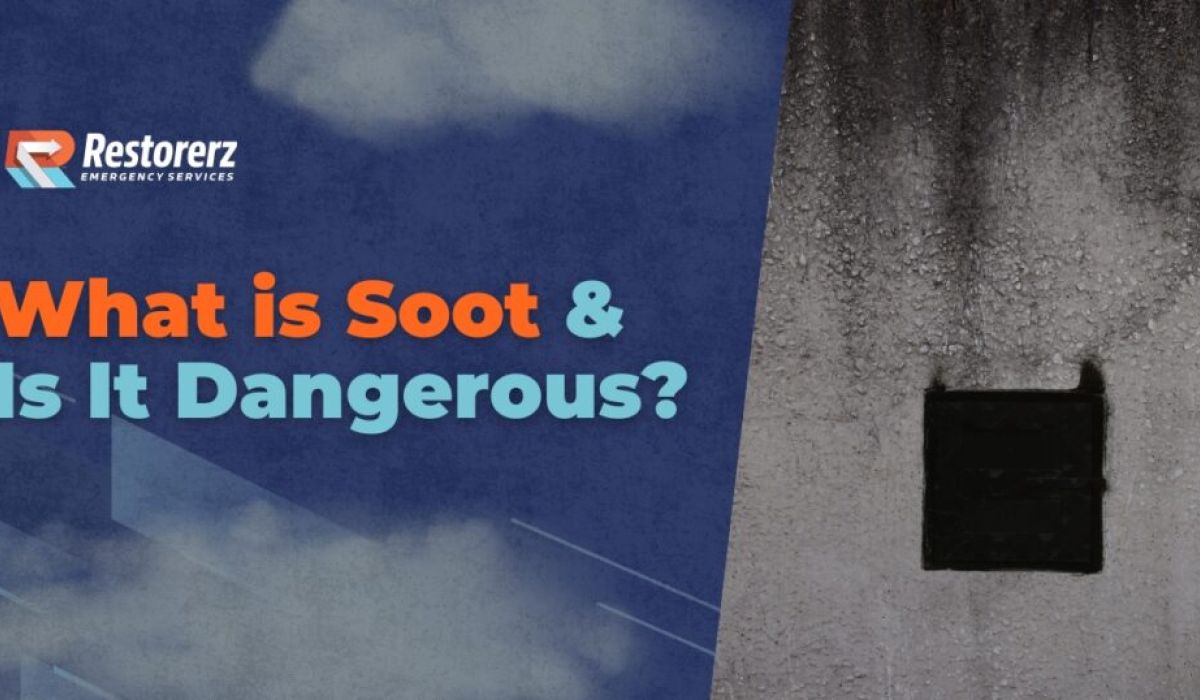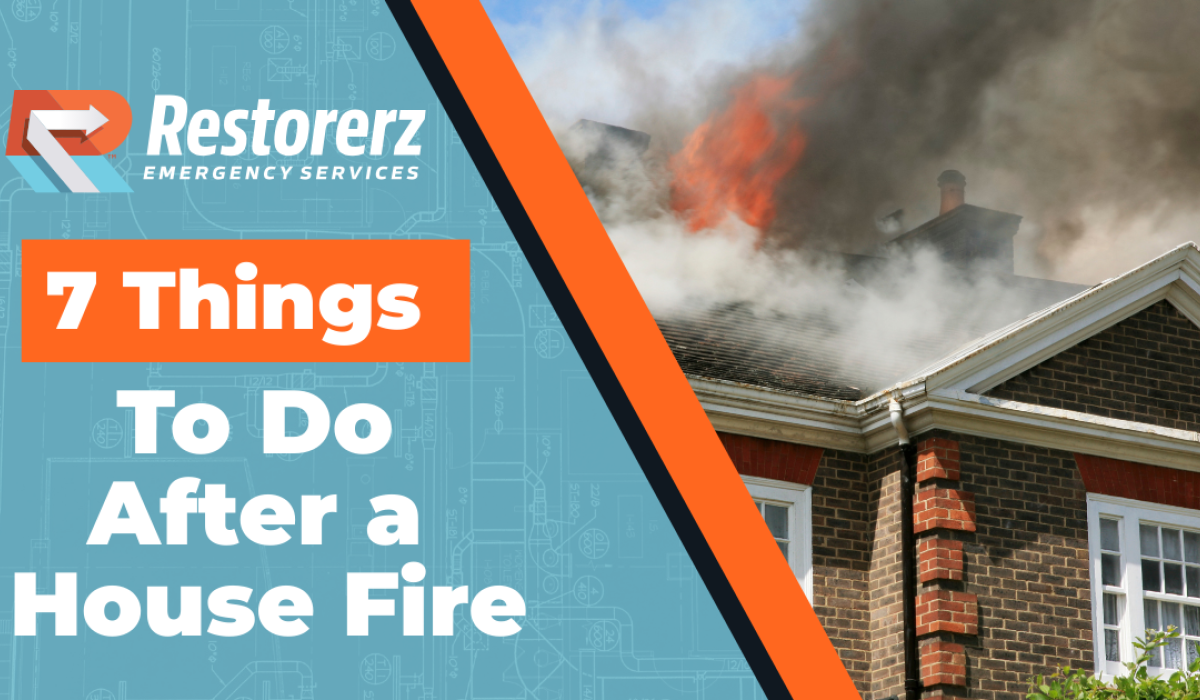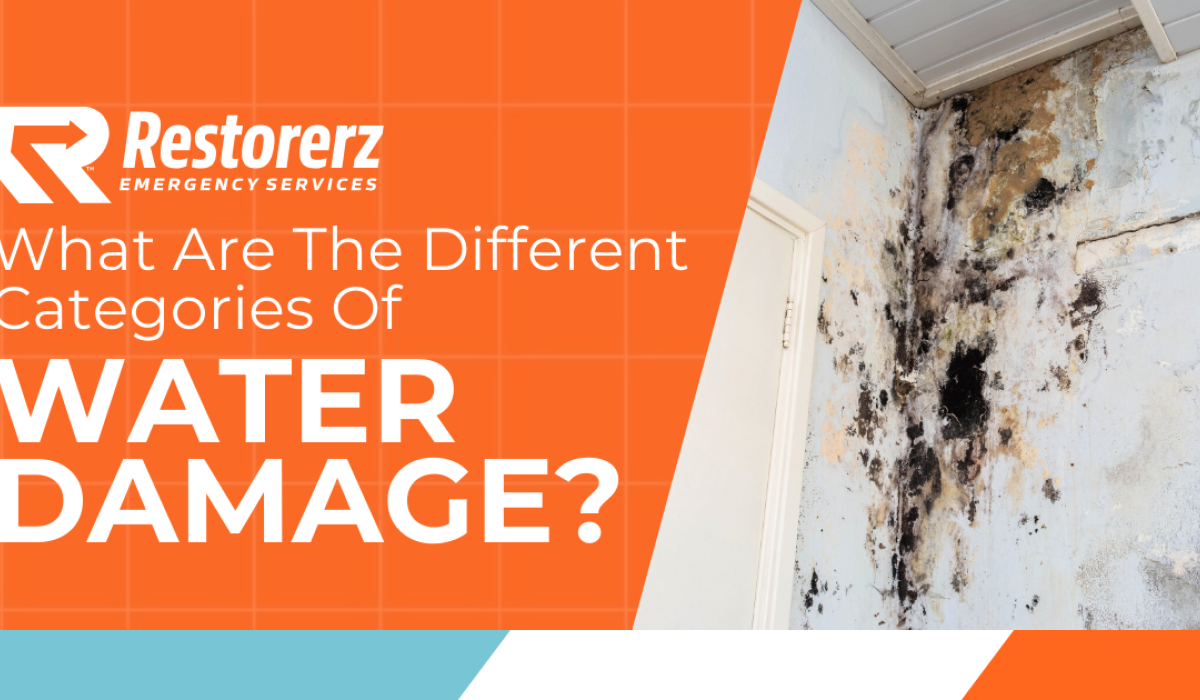Why Is There Black Dust in My House?

CEO, Restorerz Emergency Services

Black isn’t a color typically associated with dust, so if you see black dust on furniture, sinks, appliances, fans, stairs, or bedding, there is some cause for concern. Is it soot, is it dust, or is it mold?
At Restorerz Emergency Services, our IIRCRC-certified professionals provide quick responses to home concerns throughout Southern California, with 24/7 availability. We guarantee customer satisfaction, offer competitive pricing, and have approval to work with all insurance companies.
Let’s look at some of the possible causes of black dust in your house and its sources so you can take the appropriate steps and reduce any potential risk to your family.
What Exactly Is Black Dust?
Black dust in your home will typically be fine and powdery. Soot and dust will easily wipe away. To test what the black dust is, apply a small amount of bleach. Soot and dust will stay the same color, but mold will change to a lighter color or disappear after a few minutes.
Black mold is a serious problem and is extremely toxic. If you suspect you have mold in your home, or if soot is an issue, schedule professional remediation with Restorerz to avoid health hazards and property damage.
Common Causes of Black Dust in Homes
Some of the most common causes of black dust in Cali homes include:
Furnaces and wood fires
The most common cause of black dust and black soot in the house is furnaces and wood fires. Regular dust that blows into a furnace can be carbonized into black dust, while black soot appears when burning a wood fire or candle.
Poor insulation
Poor insulation causes a phenomenon known as ghosting. Soot tends to cling to cold, damp spots on surfaces, forming dark stains, patches, and streaks on walls, ceilings, cabinets, and refrigerators. The soot particles can originate from candles, furnaces, tobacco smoke, and even dust from the chimney, a vent, or even outside.
Humid conditions
High humidity creates a damp environment that attracts soot to walls, floors, and ceilings. This can happen when you use a humidifier frequently, leave windows open in rainy weather, or hang wet clothing indoors.
Dry conditions
Dryness can also cause soot and dust particles to stick to walls. That’s because static electricity builds up on surfaces in a dry environment instead of dissipating and attracts particles to surfaces to create black dust.
Air conditioning
Look on and around your air conditioner’s air vents for black dust. Humidity is created by moisture drained from the AC system, but moisture can build up if a drain is blocked. Condensation can form inside an air duct as well, attracting soot particles.
A humid environment is ideal for mold, which may also be what you’re seeing. Signs that black dust may be mold in your ducts include:
- Difficult-to-remove black dust around the vents
- Musty odors coming from your heating and cooling system
- Allergy symptoms, nausea, headaches, and fatigue
Is Black Dust Dangerous?
Yes, prolonged exposure to black dust in your house can cause illness, respiratory problems, and may even lead to lung cancer. While a little bit of dust may be okay, the more you inhale, the worse it is for your health. Even in the short term, you may notice eye and nose irritation, sneezing, coughing, congestion, and worsened asthma symptoms.
If the black dust turns out to be black mold, this is also cause for concern. If you have mold growing in your home, there are a few things you should know:
- Mold spores are everywhere, and they thrive in damp environments with enough nutrients to sustain them.
- There are many different types of mold. Some are harmful to humans, while others are not.
- Mold spores and other contaminants irritate the lungs, nose, eyes, and throat, causing mild to severe reactions.
How To Get Rid of Black Dust in Your House
There are various ways to remove black dust from your house, like:
- Opening the window when using candles
- Using LED candles and candle warmers
- Regularly vacuuming and deep cleaning your carpet
- Routinely sweeping under couches, beds, and other furniture
- Replacing your HVAC filter with a high-efficiency one
When To Call a Professional Restoration Company
Professional mold remediation is required when:
- You see spotty discoloration on walls, floors, or ceilings with a powdery or slimy texture.
- There’s a musty odor, especially if your home has experienced a recent leak.
- You’re noticing the physical symptoms of mold inhalation.
- There are signs of rot in your home that threaten its structural integrity.
DIY mold remediation is not recommended, as you could damage your home, accidentally spread the mold further, or miss hidden patches, leaving it to grow back. Contact Restorerze for a professional cleaning service you can trust.
Don’t Wait, Contact Restorerz Emergency Services Today
If you have black soot or mold in your house, Restorerz can help. We provide professional cleaning services and mold remediation in Southern California, including Placentia and Las Vegas, as well as:
Available 24/7, our company is A+ rated by the BBB, and we’re locally owned and operated. Our team can quickly clean up your home and make recommendations to avoid black dust in the future. To get started, request service online or call us.
Frequently Asked Questions
Is black dust the same as mold?
No, black dust is usually carbon-based soot, while mold is a living organism. They look similar, but they’re entirely different substances.
How to tell if it’s black mold or dirt?
To tell if the black dust in your home is black mold, try wiping it with a wet, soapy sponge. Dirt will come away easily, while mold will not.
Can I clean black dust myself?
Yes, you can clean black dust yourself, but if it’s an excessive amount or keeps returning, you may need your heater serviced. If the black dust is mold, turn to an expert for remediation.

![What is Green Mold [Comprehensive Guide]](/wp-content/themes/yootheme/cache/ef/Restorerz-What-is-Green-Mold-1200x630-10.22.2025-v1-efa9ac85.jpeg)







![All About Pink Mold [Prevention & Remediation Strategies]](/wp-content/themes/yootheme/cache/3a/Restorerz-Blog-All-About-Pink-Mold-Prevention-Remediation-Strategies-1-3a7c91cf.png)
